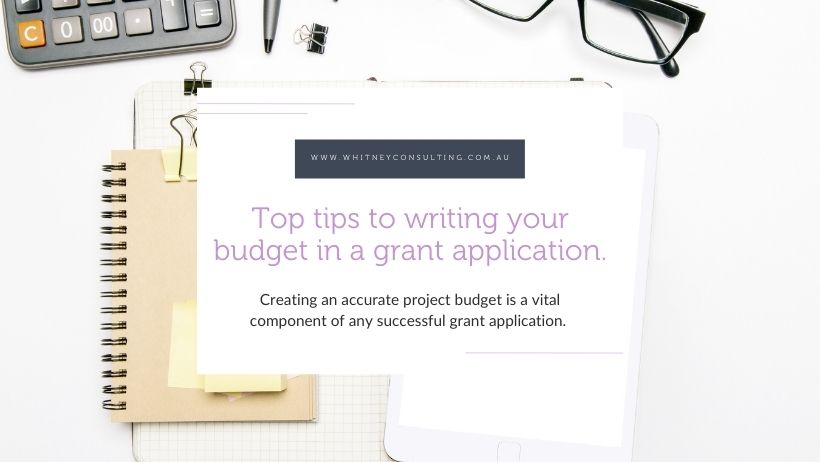Creating an accurate project budget is a vital component of any successful grant application. The budget is also the part of an application that often lets people down or costs them money. It makes sense then to ensure your project budget is right from the get-go.
When it comes to creating your project budget always ensure you plan for the worst, obtain the most accurate estimates you can, identify where changes are likely to originate and have a contingency plan in place that will allow for potential oversights.
An accurate project budget will be comprehensive in its detail; however it should be clear to read and easy to understand.
A project budget should describe your project.
Your budget should tell the story of your proposed project. An assessor should be able to look at you budget and understand what your project will deliver by looking at the items of expenditure.
This is because your budget should link to your project tasks. Everything you will do as part of your project will cost money and should therefore have a budget line item associated with it.
Go through the project task list or To Do List and obtain quotes or calculate costs for each of the tasks. This will form the basis of your budget.
Ensure you keep it SIMPLE.
If there is a budget template included in your grant application by the funder, then use it, don’t go creating a new one because they have provided it to you for a reason. Assessors want to compare apples with apples, so they want all applications to have the budgets in the same format.
If however you are not supplied with a template, keep your budget simple and to the point. Make it clear exactly what the project costs are, how they have been calculated or determined and do not use jargon. Often the best way to do this is by providing a budget spreadsheet with notes that explain how a cost was determined.
E.g. a note against a volunteer in-kind budget line item of $1,200 could be “In-kind volunteer costs were calculated at $15 per hour. 5 volunteers have committed to completing 16 hours of volunteer work each.”
And lastly, if you are provided specific guidelines for the budget, ensure you follow them. Some grants specify how in-kind staffing is to be calculated so check these guidelines before creating your budget.
Build contingency in to your budget.
Always ensure your budget has wiggle room for the small costs that you many have overlooked or for unforeseen issues such as delays, damage to equipment or accidents.
For larger projects this will come in the form of a contingency percentage. Most construction projects use a contingency of between 5 and 10%. Any less and the assessor will question whether the budget is accurate and there is sufficient planning in place for cost overruns. Any more and it may seem that you are asking for too much funding to complete your project.
However, for projects where a contingency percentage may seem inappropriate, you should still ensure a small amount of contingency is added in to your budget. For example, if you estimate something may take 20 hours, put 25 hours in to your budget, just to make sure you are able to complete the work within that allotted time/budget.
Often the best place for contingency in smaller, non-construction projects is by ensuring you have reasonable project management and project administration costs as line items in your budget.
Always provide evidence.
As explained in tip number 2, you should always explain how you calculated or determined the costs specified in your budget. Where the cost is for purchasing equipment or outsourcing work, always obtain at least one quote and reference that quote or, if possible, attach it to your application.
This provides certainty for the assessors that you have provided them an accurate budget and you will be able to complete the project within the budget.
Check the grant requirements.
If you are successful with the grant, there may be some requirements of the grant funding that will cost you money. Common examples are obtaining an independent financial audit of the project when it is completed and erecting signage at the project site. These things cost money and if you don’t put them in your project budget, then they will have to come from somewhere else within your organisation. Make sure you don’t short-change yourself by checking these requirements of the grant agreement and including any of these costs in your budget.
If you are unsure of how to create a project budget or would like to speak with someone about anything grant related, please contact us.






